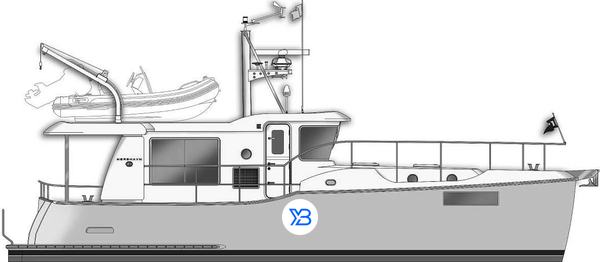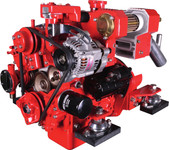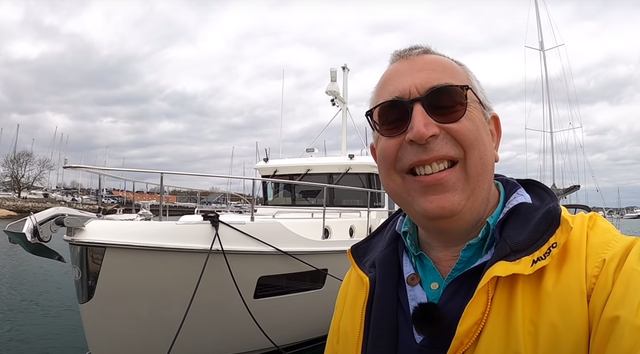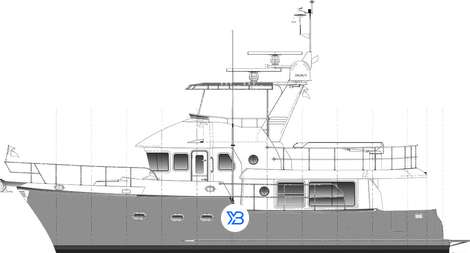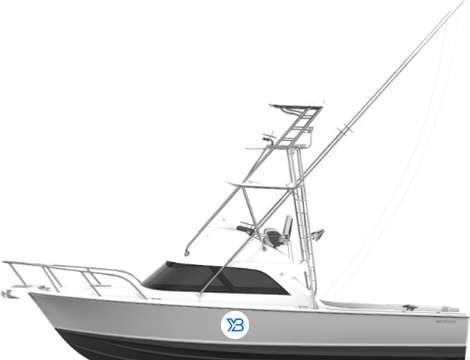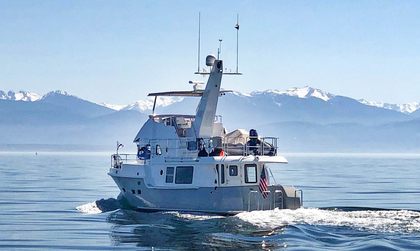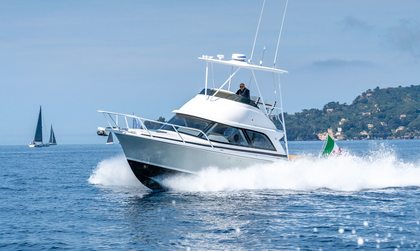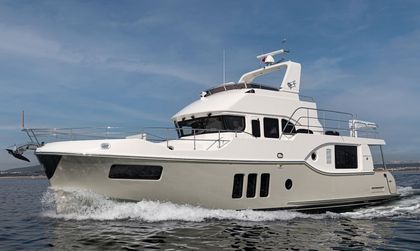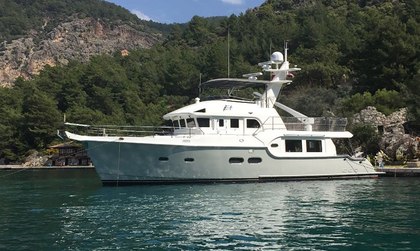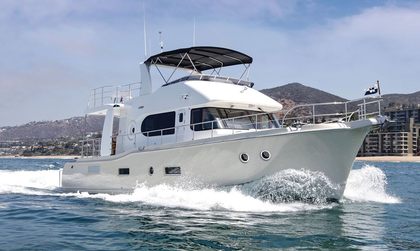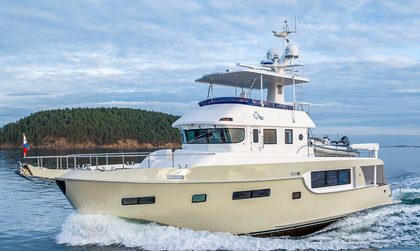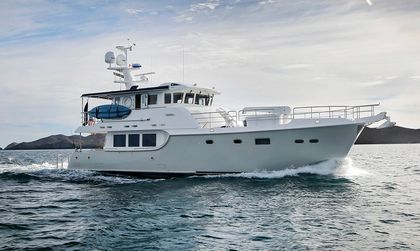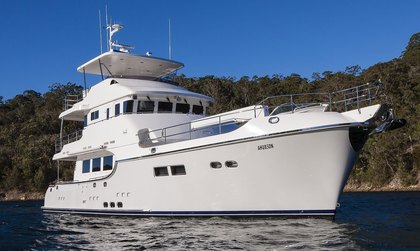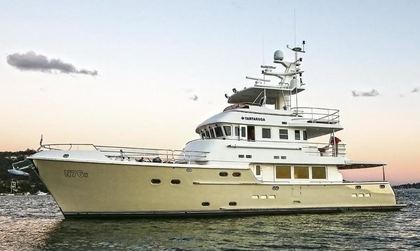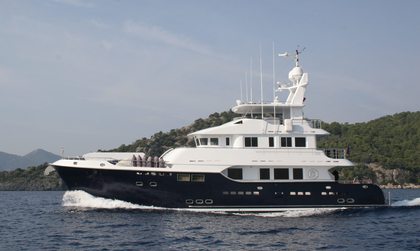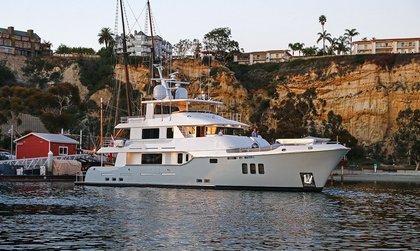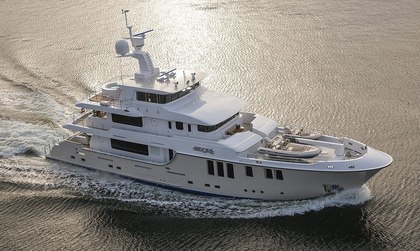The N41 certainly has big boots to fill, its predecessor, the 40, holds the record for the fastest circumnavigation by a production cruiser. A mixture of more range and an improved interior are the two main areas of development for the 41, making it a more rounded but still highly capable yacht.
N41 Features
- A range of over 2,500 miles at 8 knots
- Single or two cabin layout
- Twin-engine configuration
- Efficient hull design
Interested in owning a Nordhavn 41? This model is currently in production and can be customized to meet your specifications. Order a New Nordhavn 41 Boat tailored to your desires. Ready to purchase sooner? View All New & Used Nordhavn 41 Boats for Sale available now!
-
Guests
6 Max
-
Cabins
2 Max
Or view photos for only: Exterior Interior Technical Areas
About
The hull is said to be more efficient hull, with the option of twin engines, while there will be a two and four berth option inside. Both of these features help make the N41 a more cruise-friendly option.
The four-berth layout features a guest cabin with overlapping bunks, but it is the Owner’s version that exemplifies this yacht’s purpose. Removing the second cabin, it devotes all the below-deck accommodation space to two people.
The guest cabin becomes a heads compartment with a separate shower, and there is space for a large walk-in wardrobe. Both are accessed from the large forward cabin, while the heads can also be accessed from the main corridor.
On the main deck there is a large salon and galley with seating on both sides, the large dedicated helm station lies forward.
At around 8 knots you can expect a range of more than 2,500 miles and CE Category A, meaning the N41 is safe for ocean use and designed to take conditions that would leave other boats confined in harbour
From The Manufacturer
In order to outdo the Nordhavn 40, Jim and his brother, Jeff Leishman who is Nordhavn’s Chief of Design, partnered with Dutch yacht design firm Vripack to create a superior hull form. Through Vripack’s sophisticated Computational Fluid Dynamics (CFD) program, the original hull lines drawn by Jeff Leishman were fine tuned to create a hull that is approximately 30 percent more efficient.
Quite simply, to achieve efficiency, the goal is to reduce pressure against a hull in order to reduce resistance. Since wave resistance typically is 40 percent of a boat’s total resistance, efficiency is improved dramatically with a reduction in wave resistance. According to Bart Bouwhuis, co-Director of Vripack, the CFD allows a sort of 3-D view of a boat moving through ‘digital’ water. “In traditional tank testing, you can see the [action of] the wave and the result of the pressure,” he said. “Digital [tank] testing shows the cause of the pressure.”
Once Vripack ran the N41’s lines through its CFD program, it was able to reduce wave friction by 20 percent, “which is significant,” said Bouwhuis.
They assessed a further reduction of resistance – by another 10 to 12 percent – with the addition of a trim wedge.
Awards
Specs
-
Length12.6m
-
Accommodation6 Guests
-
MaterialsGRP Hull
& Superstructure -
Max. Range8232 nm

